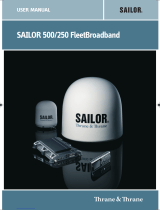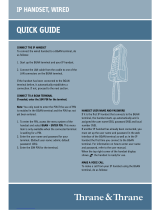
iii
Safety summary
The following general safety precautions must be observed during all
phases of operation, service and repair of this equipment. Failure to
comply with these precautions or with specific warnings elsewhere in this
manual violates safety standards of design, manufacture and intended
use of the equipment. Thrane & Thrane A/S assumes no liability for the
customer's failure to comply with these requirements.
Observe marked areas
Under extreme heat conditions do not touch
areas of the terminal or antenna that are marked
with this symbol, as it may result in injury.
Microwave radiation hazards
During transmission the antenna in this system
radiates Microwave Power.This radiation may be hazardous to humans
close to the antenna. During transmission, make sure that nobody gets
closer than the recommended minimum safety distance.
On the SAILOR 500 FleetBroadband, the
minimum safety distance to the antenna panel
on the focal line is 1.3 m, based on a radiation
level of 10 W/m
2
. The radiation level is 100
W/m
2
at a distance of 0.4 m from the antenna
panel. Refer to the drawing on the next page.
Pour une antenne SAILOR 500 FleetBroadband, la distance de
sécurité minimale avec le panneau de l'antenne sur l'axe focal est de 1.3
m, sur la base d'un niveau de radiation émis de 10 W/m
2
. L'appareil génère
un niveau de radiation de 100 W/m
2
à une distance de 0.4 m de l'avant du
panneau de l'antenne. Veuillez consulter le schéma sur la page suivante.
On the SAILOR 250 FleetBroadband, the
minimum safety distance to the antenna
panel on the focal line is 0.6 m, based on a
radiation level of 10 W/m
2
. The radiation level
is 100 W/m
2
at a distance of 0.2 m from the
antenna panel. Refer to the drawing below.






















